Description
This whitepaper gives an overview of 10 best practices in B2B sales in Germany. We give advice on how to best approach the sales process, how to generate leads and what to keep in mind.
1. Building trust: the most important aspect of customer acquisition in Germany (and probably anywhere else)
The decision if someone will do business with your company mostly takes only a few seconds in today’s business world. Nobody wants to be scammed, so we are all looking for trust signals. That’s especially important in Germany’s B2B world, where contract values are high and people generally skeptical.
So, the most important step before working on B2B sales is to ensure that you are a trustworthy business. Otherwise, your sales operations are prone for failure from the beginning on. But how can companies communicate that they are a trustworthy business partner?
Your company website: the digital storefront
The website of a company is mostly the place where people start getting information about your company. Accordingly, a website is the place where most trust signals can be sent and B2B customers can be convinced. Thus, it is immensely important that your company’s website has a state-of-the-art design and includes various trust signals. It is completely okay when your website only has a few pages. More important is a clean design and having a clear structure: who stands behind your company, what are you doing, what do your customers say about your offering (testimonials). Important trust signals on the website are pictures of the team (also: with links to LinkedIn profiles, phone numbers, emails, etc.), membership badges of known associations (e.g. when you are a member of your industry association). In Germany well-known badges are those of the TÜV (e.g. certifications for data security) or – for online shops – the Trusted Shops badge. Also an important factor are press badges (“As featured in Gründerszene, FAZ, Spiegel, Handelsblatt, etc.).
Press coverage
Another really important trust signal is press coverage. When someone googles your company name and finds an article of a renowned media outlet reporting about you, he can be quite certain that you are a reliable partner. Unfortunately, getting press coverage is a very own topic that would need its own whitepaper. But, PR agencies can be helpful at that point, especially when a larger market entry is planned.
Activity
Also vital in communicating that you are a trustworthy business partner is activity. Activity means: publishing blog posts, being active on company social media channels, etc. By recent activity, people see that your company is active in the market. Another positive side effect from activity through steady publications of blog posts is that thereby your search engine ranking increases and people get aware of your company through Google & Co.
2. Understanding the market: explore possible customer groups and habits of relevant German customers
Before starting sales activities it is essential to get an understanding of the market mechanisms in your industry. It is crucial to know your possible customers, where they are concentrated, how they work and what they care about. This is even more important if you are thinking about entering new markets. We give you some hints about how to get a better understanding of the German market.
Main questions are:
- Who are your customers? Where are they located? Are there regional clusters?
- Are there important distributors in the market? Which agents do you need to convince in order to be successful?
- Do you know relevant national, regional or even local peculiarities? Do the needs and wishes differ from those in your domestic market?
- Which competitors do you need to consider?
Be proactive and ask potential customers about their needs
User feedback is one of the most important elements in agile software development. Prior to developing products, intensive surveys of potential users are conducted to optimize the offer. Our recommendation is that you proceed in the same way before entering the German market. Identify potential customers and partners and ask them about their wishes and needs. It would be best if you could identify what customers dislike about previous providers. You will recognize that the needs might differ from the ones you already know from your home market. Ask yourself if it might make sense to revise your unique selling proposition (USP) and try to adapt the way you communicate accordingly.
Get in touch with industry experts in Germany and in your home country
Your company is certainly an expert in its field of activity. You understand the needs of your customers and offer the perfect solution. But does this also apply to the German market as well? Don’t rely on assumptions, but talk directly to experts for Germany. It is not necessarily important that the experts are active in the same industry. It is much more important that they understand the German peculiarities. The optimum would be to find people who know and understand both your home market and the German market. This is the best way to identify differences and similarities. Don’t be afraid to write to experts on LinkedIn, from whom you hope to get valuable input. As long as you are polite and honest, you are sure to receive information that really helps you.
Make use of industry databases & statistics
The preparation of the market entry in Germany should of course not get out of hand, but you should still build up a solid database. Market overviews, such as those provided by Researchgermany, help to identify the most important players. In addition, statistics portals such as Statista (statista.com) are useful for obtaining valuable insights. Use as many data sources as possible to get a detailed picture. Also note that much information is often only available in German. Therefore, it makes sense to use Google Translate in order to get a rough idea of local websites.
 3. Getting up-to-date: read industry publications, follow the right people, start building lead lists
3. Getting up-to-date: read industry publications, follow the right people, start building lead lists
At the core of establishing sales in Germany is a broad list of possible leads that are – over the course of time – turned into prospects and finally customers. Every lead list starts with an empty, well-structured Excel- or Google Sheets table or a neat Customer-Relationship Management (CRM) system like Salesforce or Hubspot. Googling for half an hour for companies in your target industries will give you the first possible customers. But, for lively sales activities, your lead list should be filled with hundreds of leads that are afterwards distributed among your sales team.
There are various ways to create new leads. Using your website or attending trade fairs (as described in the fifth chapter) are two possible ways. But, you should also check the directories of industry associations and follow industry news in general in order to constantly create new leads.
Use the database of industry associations
In Germany, many industries have their own industry association (“Verbände” in German). Most relevant firms in your industry will probably be part of the respective association. These associations have a directory where you can see all their members. Often, that’s a great starting point for your lead list. To give a few examples:
- https://www.vda.de – association of automotive firms
- https://vuv.de – association of wealth managers
- https://www.solarwirtschaft.de – association of PV firms
- …
On the websites of the associations, you can look for the member directory of the firms. The directory ist mostly called “Mitgliederverzeichnis” or “Mitgliedersuche”. From there on, you can either build crawlers or manually copy-paste these highly relevant leads to your database.
In some cases, the associations don’t have a directory. Then, you can either ask the association if they provide you with a list of their members or you can look for alternative associations in the industry.
Reading industry publications
Several leads can be created by simply reading the respective industry publications. These industry publications can consist of newspapers, blogs, or newsletters. Through reading a certain industry publication for at least some months, dozens of relevant companies are revealed to you. Furthermore, you are getting informed about developments that might give you a perfect opportunity to connect. To give you an example: imaging your company is offering a software for invoicing automatization for industrial customers. Now, you read in the respective industry publication that the German market leader in machine engineering wants to spend €100M during the next years in the digitalization of its accounting system. That’s a perfect opportunity to get in touch with the respective manager through LinkedIn or E-Mail: “Hey, I’ve read in XY that you are working on the digitalization of accounting. I have some ideas how our software might perfectly help at that point!”
To give you an example of possible relevant publications:
- https://www.gruenderszene.de – for startup news
- https://www.wiwo.de – for general business news
- https://www.handelsblatt.com – for general business news
- https://www.manager-magazin.de – for general business news
- https://www.immobilienmanager.de – for real estate
- https://www.pv-magazine.de – for renewables
- https://finanz-szene.de – for finance and banking
- etc.
In general, finding relevant publications can be simply done by googling your respective target industry (or: industries) with the keywords “Zeitung”, “Magazin” or “Nachrichten”. Some publications have a useful online offer, others require a subscription, which also can make sense.
Most industry publications have a newsletter which you can subscribe to. Newsletters are a perfect opportunity to stay up-to-date. Optionally, create a separate email inbox for subscribing to these newsletters. Alternatively, you can follow these publications on LinkedIn where they also often post their most important news.
Following important people from your industry on LinkedIn
More and more German business leaders and managers started during the last years to communicate through LinkedIn. By reading their posts, comments and shared posts, you can a) identify new leads and b) understand the trends in the industry and what your competitors are doing. A good example for that is former Opel manager Dr. Karl-Thomas Neumann who is extraordinarily active in the e-vehicle and automotive industry – and shares everything on LinkedIn. The business network even tags him as an “influencer”. Look for the most important people in your industry (e.g. the CEO of your largest possible lead) and follow them. Also, follow your competitors in order to understand what they are doing.
Building lead lists of German firms
As mentioned before, to build a useful lead list it is crucial to have a good structure. Most CRM systems already offer this structure, but alternatively you could also start using tools like Google Sheets or Airtable to build your lead list and later import it in your CRM. Many foreign startups from our network that launch in Germany start their market entry process by building long lead lists (which are later imported to Hubspot, Salesforce, etc.).
What should be in your lead list at any case:
- Firm Name (as registered in the Handelsregister to avoid mix-ups, e.g. Isar Digital Ventures GmbH instead of Isar Digital)
- Address
- General phone number
- General E-Mail address
- Type of customer (e.g. when you are active in real estate: asset manager OR investor OR broker)
- Executives
- Status (Contacted / Not Contacted / Proposal etc.)
- Date of contact
- (Comments)
Nice to have information are:
- Contact details of suitable contact person
- Revenue(s) of the firm (yearly financial statements of corporations can be retrieved through https://bundesanzeiger.de for free)
4. Using lead lists: create a vibrant sales pipeline with German companies
Finding suitable customers and creating lead lists is a manual process that requires certain expertise and immense research efforts. Instead of wasting months of time (and money) it is often wiser to acquire a ready-made lead list.
That’s the only point where we are advertising our own products. And we only do that, because we are convinced that we offer the best lists of German companies and investors. You want to get in touch with all of Germany’s largest and most important companies? Great, take a look at our list of Germany’s 3,000 largest companies and download it with only a few clicks. Our list is the perfect starting point for the acquisition of B2B customers in Germany. The list includes detailed branch information, contact details, revenues since 2015. The list is steadily updated and extended and customers benefit from free updates. Summing it up, our list can be easily used as a basis for your lead list of German companies.
We also offer lists of the largest European real estate investors, the largest venture capital and private equity funds or the most important real estate developers in Germany.
5. Visiting trade fairs: arrange meetings, build personal relationships
Did you know that some of the world’s largest trade fairs are located in Germany? Every three years, the largest trade fair for construction machinery and construction equipment, Bauma, takes place in Munich (https://www.bauma.de/). Also, the world’s largest trade fair for agricultural technology, Agritechnica, takes place in Hannover (https://www.agritechnica.com/). If you are a real estate investment professional you would probably visit Expo Real in Munich, which is Europe’s largest conference for property and investment (https://exporeal.net/). Trade fairs play a crucial role in German business, especially when it comes to sales and networking. We collected a couple of best practices in order for you to make the most out of it.
Preperation is everything
Our most important tip is the conscientious preparation of the event. You should take a close look at the list of exhibitors and consider which companies you would like to exchange ideas with. Experience has shown that you should contact them in advance and arrange fixed appointments. Germans attach great importance to structure and preparation, so that appointments with sought-after contacts should be made weeks in advance. If you are talking to potential partners you should be able to state the unique selling proposition of your product without being too pushy. Use the trade fair to arrange follow-up meetings and try to understand the needs of the companies you are meeting.
Build a network and use trade fairs to maintain relationships
Although trade fairs are good for initiating business, they are even better suited for maintaining your own network. The secret of professional success lies in being present and being seen. We recommend that you use trade fairs to connect known business partners. Help other trade show participants to generate business and boost sales. In this way you will position yourself well and will be remembered positively. Try to use evening events in order to get to know other participants in a relaxed environment.
Use trade fairs to better understand current trends and needs
As already mentioned, a good understanding of market structures and particularities is a crucial prerequisite for a successful market entry. We strongly recommend that you use trade fairs precisely for this purpose. Look out for lectures and workshops that address current trends. Try to understand national or regional characteristics. Get into conversation with other participants to be able to work out the added value of your service even better. You will not find a better moment to talk to real industry experts.
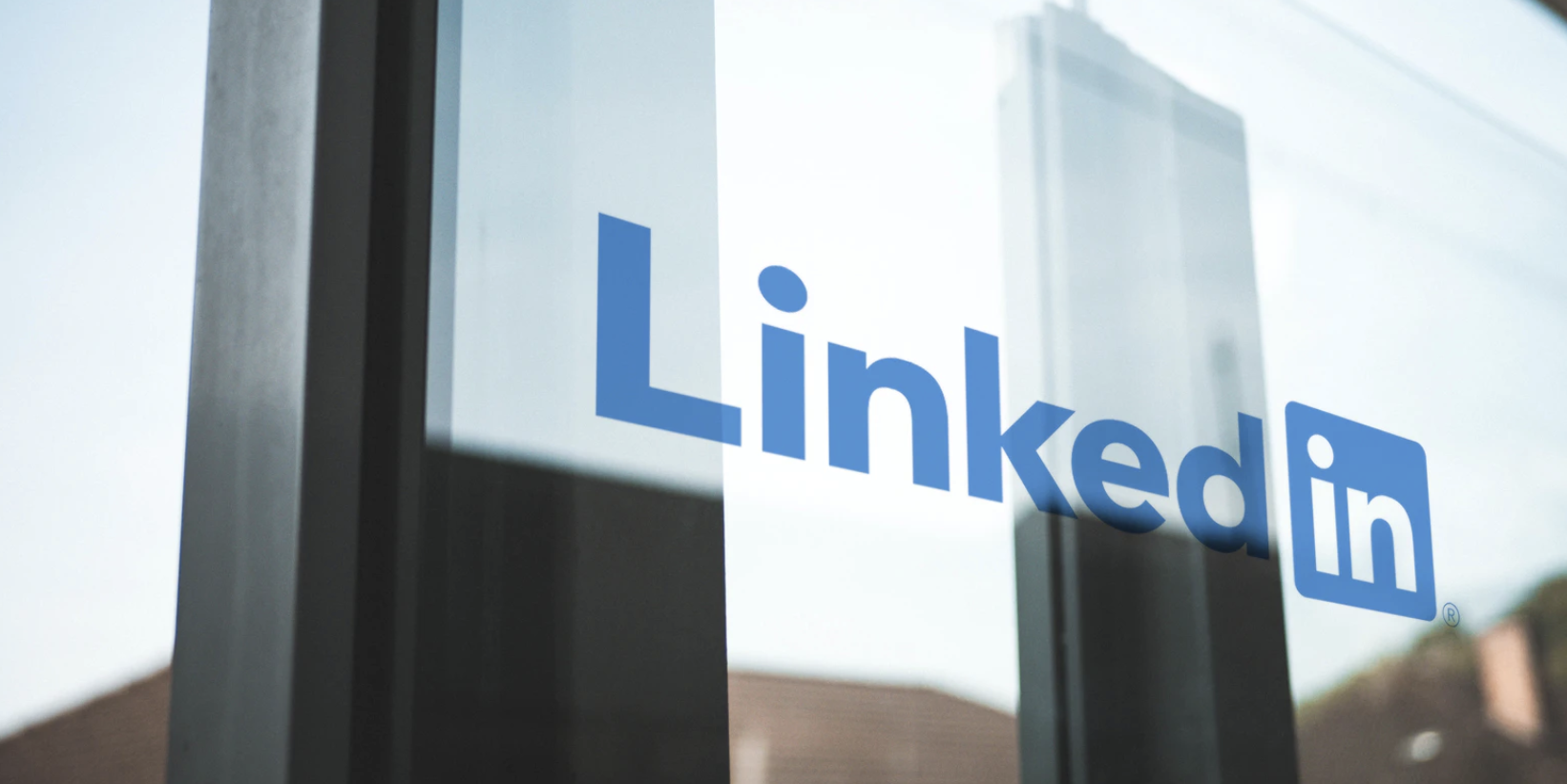 6. Build your network: LinkedIn and German Xing as helpful sales tool
6. Build your network: LinkedIn and German Xing as helpful sales tool
Social networks for business usecases – like LinkedIn and German rival Xing – didn’t even exist twenty years ago. Nonetheless, they are important tools in order to successfully approach companies in Germany and to turn leads into interested prospects and finally into customers.
Using LinkedIn and Xing as sales channel in Germany
To make one thing clear in advance: many people are practicing really annoying (and also unsuccessful) LinkedIn sales. They are copy pasting standard messages (“Hi, let’s connect!”) or offering replaceable products and services without any added value. Thereby, they are making one big sales mistake already in the beginning. By copy-pasting messages, they don’t show any appreciation for the person on the other side of the table.
Way more promising is to spend time on your LinkedIn approach: check who is the right person from the company in your lead list (the CEO, the CTO, the VP Sales, etc.?), either look for similar contact who could do an introduction or work on personal approaches (“I saw that your company is investing in XY – I was wondering if ABC is relevant to you? / I already met XY of your company at the AB trade fair, he told me that we should connect!” / “I saw that you work in your XY plant on ABC – I have an idea on XY, can I share it with you?”). Even if your “time per lead” is ten times higher through doing proper approaches and spending time on preparing your approach on LinkedIn – it is worth it!
After getting in touch with someone, don’t be too pushy, try to understand the opposite party and what the needs of your customers are. In chapter 8 this whitepaper focuses on the “offer free services” strategy, which often drives engagement of possible leads.
7. Adapting to German privacy laws: keeping GDPR in mind
When writing advice about B2B customer acquisition in Germany, it is crucial to at least mention the European General Data Protection Regulation (GDPR) laws. Through GDPR, data protection got a higher priority. Especially when selling products, it is important to keep in mind what is allowed and what not. Also, there are several regulations regarding marketing which have to be kept in mind.
In general, for example, it is not allowed to add contacts to your newsletter without getting their permission. For more information regarding GDPR, there are many sources on the internet that give detailed advice.
At this point, we can’t give any legal advice, but we can give some best practices what is rather unproblematic:
- Writing letters to the firms
- Calling them (if mutual interest can be assumed)
- Get in touch with them on trade fairs
- Using LinkedIn to get in touch with relevant contacts
8. Offering free services and products: get your foot in the door and enhance relationships
When running an online business, it is all about conversion rates. How many percent of users click on your ads? How many percent of your website visitors sign up for a free membership? How many percent of your free members convert to paying users? In order to optimize the sales of your online business, you work on optimizing these conversion rates through better marketing, better user experience, better products and better customer support.
The same applies for sales (in Germany, and anywhere else in the world). Your goal should be to optimize your conversion rates, for instance how many of your leads react on your approach. Possible means for that are changing the approach (calling instead of writing emails), changing the contact persons (getting in touch with the purchasing department instead of with the CEO or vice versa) or changing your offered product.
However, one of the most effective things in boosting your sales relationships is to offer something for free instead of rushing in with your offering. Imagine that someone is getting in touch with you on LinkedIn. One of them is offering you a free version of his new product (for instance, a multi-functional pen) and is eager to hear about your opinion. The other one is asking you if you are interested in introducing new pens at your firm. With which of the two you are more likely to make contact? Probably with the one willing to send you a free pen. Although both are trying to sell the same products (multi-functional pens), one of them makes a little more effort and is rewarded for that.
Giving away free products is in some cases pretty easy, in other cases (especially when you sell high-price products, like production machines) a little more difficult. What’s always important: your free product or service should be – although it’s free – be of high quality. Otherwise, you miss the whole point of it: showing that you are a trust-worthy business partner that offers great products.
Some possible ways free products or services that can optimize your sales conversion rates are:
- Free versions of your product – for instance free memberships of your web service
- Free low-price products of your portfolio – for instance if you sell machinery tools a free set of screwdrivers from your firm
- Free consultation
- Free analysis results – for instance if you have analyzed data that was created by your firm that might provide added value
- Free whitepapers – like this one – that show your expertise in the industry
Offering free services is often just the starting point of turning leads into prospects. From there on, you have to establish a relationship and carefully teaser your products. By the way, offering free products (like Whitepapers) is also a great way to turn website visitors into newsletter subscribers or leads.
9. Whitepapers and webinars: show your expertise, engage with your sales pipeline
This subchapter is dealing in detail with two possibilities to turn your leads or prospects into customers and to win new leads. By writing whitepapers about your topic or hosting webinars, you can show your expertise, talk about your products and get attention from your target audience.
Whitepapers are free, high-quality pieces of content about a certain topic. Whitepapers deliver valuable insights in the field of your target audience. By spreading your whitepaper you reach two main goals: getting people to know your company and to show that your company is an expert in the field.For example, when you are targeting machine engineering firms with your AI-based product, a whitepaper about “5 easy ways how AI can support the maintenance of your machines” might be of interest for many readers from the field. Thereby, you can show that you know a lot about digital maintenance and promote your firm.
Writing a whitepaper requires experienced writers and the willingness to spend a certain amount of resources on the project. First, you have to define an interesting topic. Ask yourself: on a whitepaper with which title would most people click (or to frame it like in the chapter before: with which title would the conversion rate be the highest?). Afterwards, the best way is to start defining chapters. Afterwards, either dedicate one experienced team member to write the whole report or – alternatively – distribute the report between different team members. When the report is ready, don’t forget to spend some time on readability, formatting and promotional pictures. The report should be downloadable on your website. Optionally, you could require users to sign up for your newsletter in order to get access to the report.
After the publication of your report, spread it to your audience. Send it to your newsletter subscribers, send it to your leads and prospects, spread it on your LinkedIn and Xing account, ask your team members to share it. Maybe even book LinkedIn ads for it or use it as an remarketing campaign for your Google ads.
An alternative to whitepapers are webinars. Webinars have the advantage that they require less time, but more preparation (for instance, setting up the presentation environment). Then, once again book LinkedIn ads and invite your leads and newsletter subscribers. Webinars are a great way for short presentations about your product or relevant topics.
10. Use your network: benefit from existing relationships
Last but not least, a major part of sales in Germany is based on the network. There is no better sales mechanism than a recommendation, there is no better way to get in touch with a relevant lead than getting introduced.
The most important thing to benefit from your network and customer recommendation is that your product is actually recommendation-worthy. When people love your product and your service, they are much more likely to make a recommendation. So, spend some effort to a) offer great products and b) make existing customers happy. That can be through small gifts, free extra services (which are not expected by the customer), good customer service. Also, many successful startups grow through recommendation systems like “refer a friend, get 10€!”. As long as the reward for referrals is attractive, this can also be a powerful sales mechanism.
From a sales perspective, pay attention to existing common acquaintances between you and your sales contact. In LinkedIn, you can simply see your common acquaintances with someone, in the real world these get revealed by talking to your network. Gently ask for introductions, get introduced, talk to the relevant contacts, have your great product in mind.
Conclusion
We hope that this whitepaper helped you to get some input on how to manage B2B customer acquisition in Germany. To sum our whitepaper up in a few sentences: work on your trustworthiness, understand your customers in Germany, build lead lists, get in touch with your leads, offer them great products and free teasers, and finally boost your sales through referrals and introductions. While all that, keep GDPR in mind.
In general, from our opinion are B2B sales in Germany a little bit more difficult than in other European countries. People are a bit more skeptical and have many questions about your product. But, in the long-term, German customers are really reliable and great contacts to work with. We wish you good luck in relevant acquiring German business and hope that this whitepaper gave you some ideas and helped you a bit to understand the German market. And, maybe, our list of Germany’s 3,000 largest companies even helps you to boost your lead list and to grow your customer base in Germany.
About us: our experience in B2B sales in Germany (and why we are the right ones to write a whitepaper about it)
Since the foundation of our company five years ago, we learned one thing: sales in Germany is certainly different than in any other country. Some rules are universally applicable – like the important role of trust – while others are rather special in Germany. But, who are we and why are we the right ones to write a whitepaper about Busines-to-Business (B2B) sales in Germany?
We are Isar Digital Ventures, a German company builder that operates a portfolio of B2B focused digital brands. We mainly offer databases of companies and investors. For example, on our portal researchgermany.com, our customers can download a list of the 3,000 largest companies in Germany or of the 400 largest real estate investors. Through our lists, our customers can immediately start getting in touch with relevant business contacts in order to establish their business in Germany.
Sales is an integral part of our business and throughout the last years we steadily improved in it. We are in constant exchange with sales representatives from industrial customers, we work together with business development executives from startups, we are discussing ideas with investors. We know how German companies work – also through our experience in the industry – and we know how foreign companies can get in touch with them.

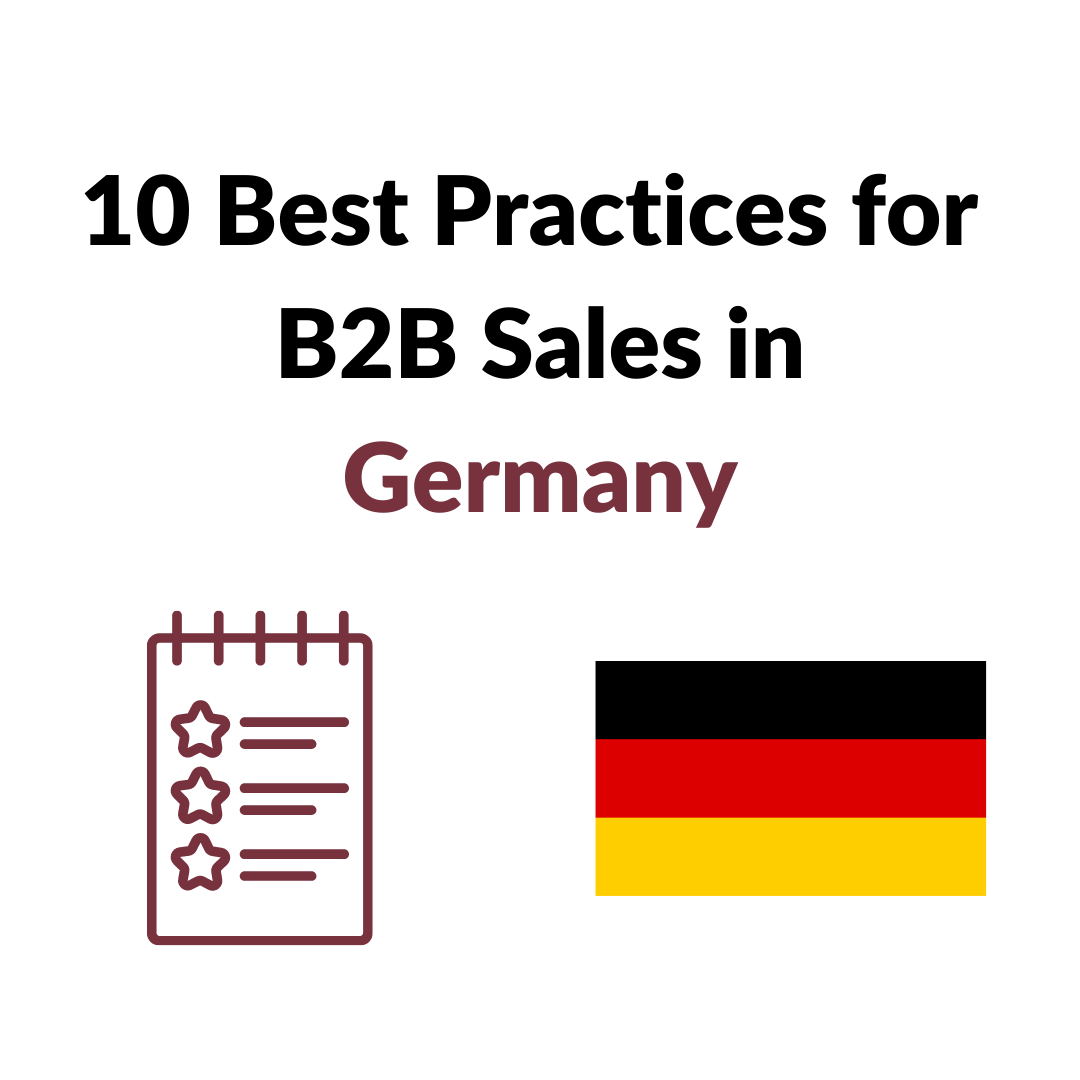

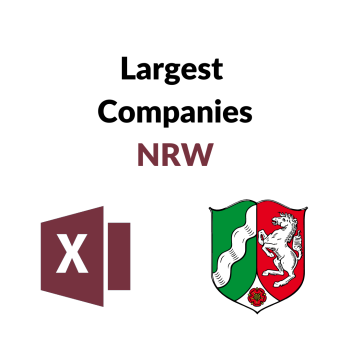
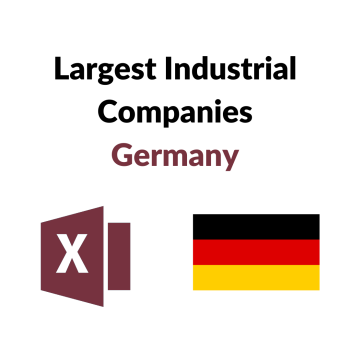
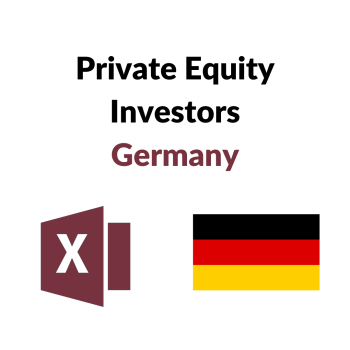
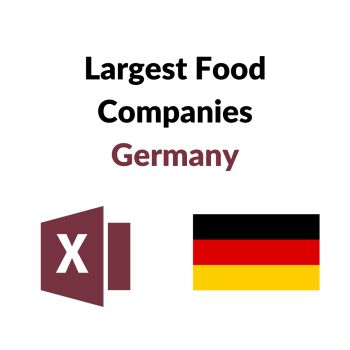
Bruno (verified owner) –
Great paper to read about sales in Germany – highly recommended. Bear in mind that the whole ebook is also available on the product page..